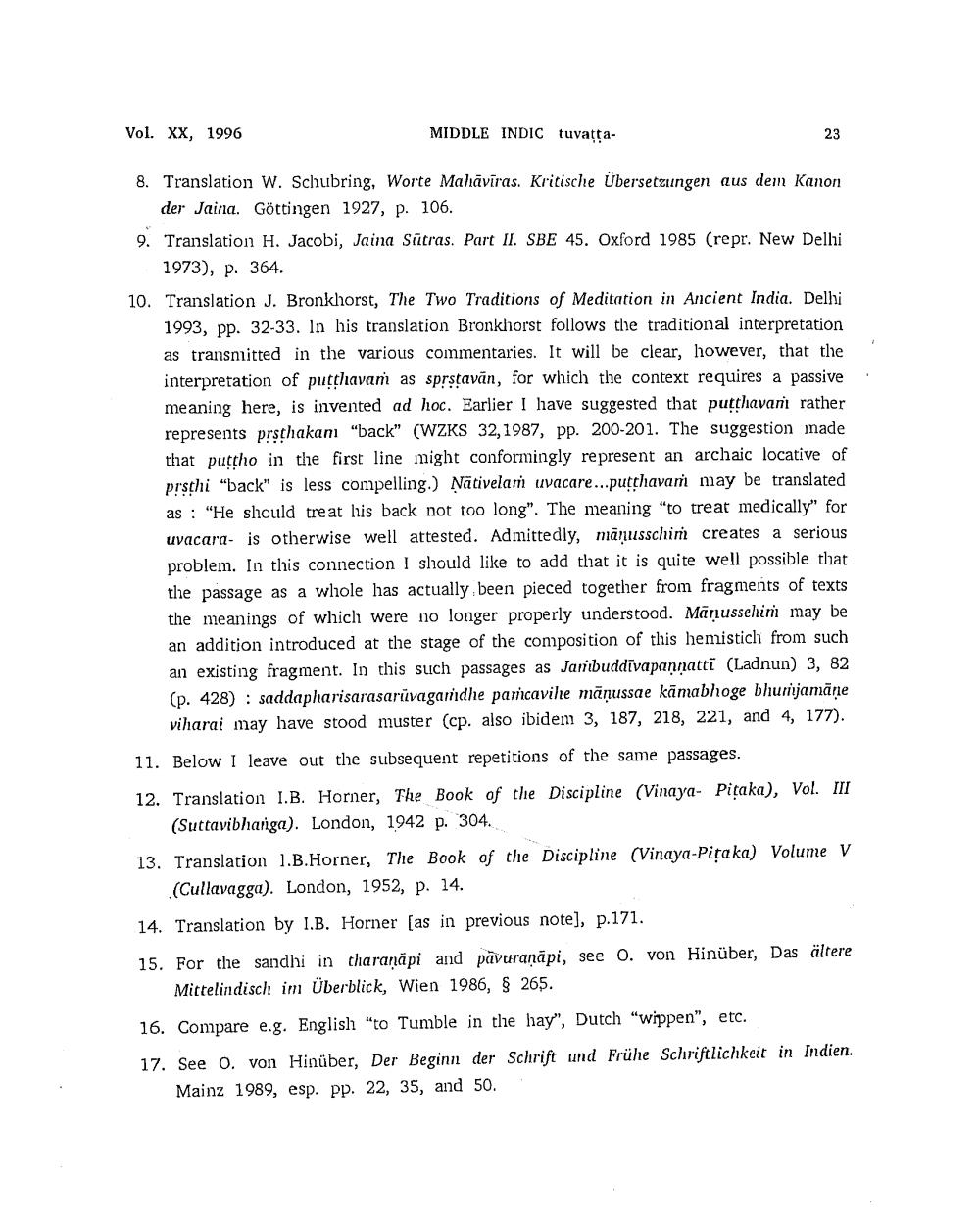________________
Vol. XX, 1996
MIDDLE INDIC tuvatta
8. Translation W. Schubring, Worte Malāvīras. Kritische Übersetzungen aus dem Kanon
der Jaina. Göttingen 1927, p. 106. 9. Translation H. Jacobi, Jaina Sūtras. Part II. SBE 45. Oxford 1985 (repr. New Delhi
1973), p. 364. 10. Translation J. Bronkhorst, The Two Traditions of Meditation in Ancient India. Delhi
1993, pp. 32-33. In his translation Bronkhorst follows the traditional interpretation as transmitted in the various commentaries. It will be clear, however, that the interpretation of putthavam as sprstavān, for which the context requires a passive meaning here, is invented ad hoc. Earlier I have suggested that putthavani rather represents prsthakam "back" (WZKS 32, 1987, pp. 200-201. The suggestion inade that puttho in the first line might conformingly represent an archaic locative of prsthi "back" is less compelling.) Nativelam uvacare...putthavam may be translated as : "He should treat his back not too long". The meaning "to treat medically" for uvacara- is otherwise well attested. Admittedly, māņusschim creates a serious problem. In this connection I should like to add that it is quite well possible that the passage as a wliole has actually been pieced together from fragments of texts the meanings of which were no longer properly understood. Mānussehin may be an addition introduced at the stage of the composition of this hemistich from such an existing fragment. In this such passages as Jambuddivapannatti (Ladnun) 3, 82 (p. 428) : saddapharisarasarūvagandhe parcavile māņussae kamabhoge bhurijamāņe viharai may have stood muster (cp. also ibidem 3, 187, 218, 221, and 4, 177).
11. Below I leave out the subsequent repetitions of the same passages. 12. Translation 1.B. Horner, The Book of the Discipline (Vinaya- Pitaka), Vol. III
(Suttavibhaniga). London, 1942 p. 304. 13. Translation 1.B.Horner, The Book of the Discipline (Vinaya-Pitaka) Volume V
(Cullavagga). London, 1952, p. 14. 14. Translation by I.B. Horner (as in previous note), p.171. 15. For the sandhi in tharaṇāpi and pāvuraņāpi, see 0. von Kinüber, Das ältere
Mittelindisch im Überblick, Wien 1986, § 265. 16. Compare e.g. English to Tumble in the hay", Dutch "wippen", etc. 17. See o. von Hinüber, Der Beginn der Schrift und Frühe Schriftlichkeit in Indien.
Mainz 1989, esp. pp. 22, 35, and 50.




